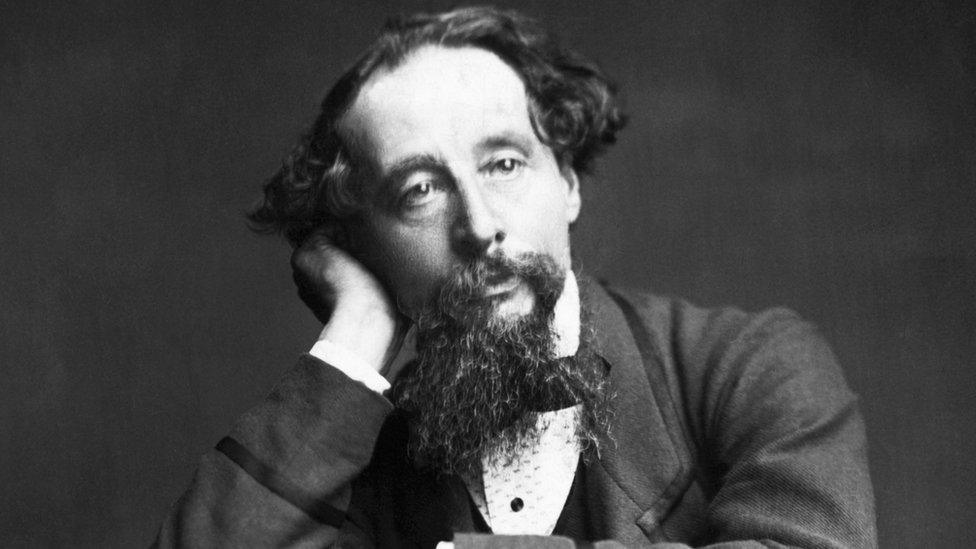The odd illustrations of Charles Dickens's Christmas books
- Published
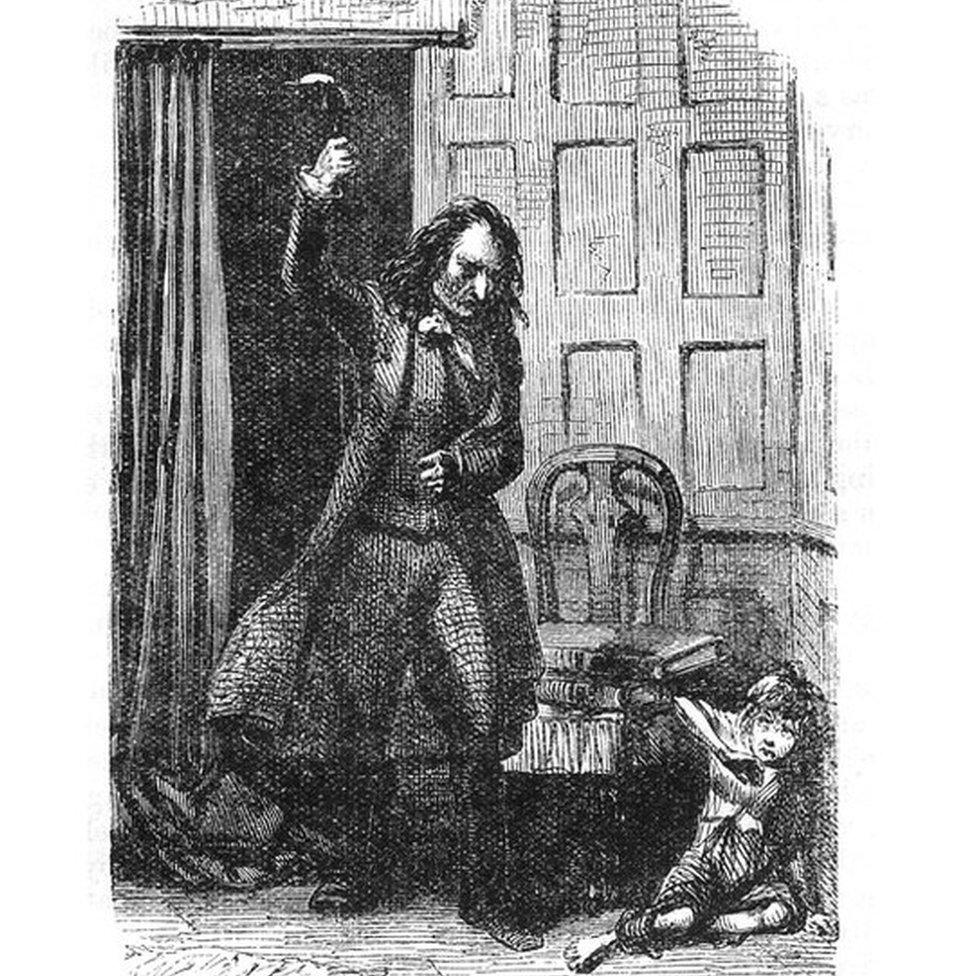
The fearsome Redlaw and the Boy was created by John Leech for The Haunted Man
While Charles Dickens is often remembered for his love of yuletide festivities, the illustrations he commissioned for his Christmas stories may make you question such an opinion.
With titles such as War and depicting goblins, fairies rising from a kettle and a man thrashing a cowering boy with a shoe, some of these pictures appear more disturbing than decorative.
"Anyone looking at the illustrations to the Christmas books after A Christmas Carol and expecting similar images to Mr Fezziwig's Ball is going to be disappointed," says Dr Michael John Goodman, the creator of The Charles Dickens Illustrated Gallery, external.
In 1843 the Victorian novelist wrote A Christmas Carol and started the phenomenon of the festive book.
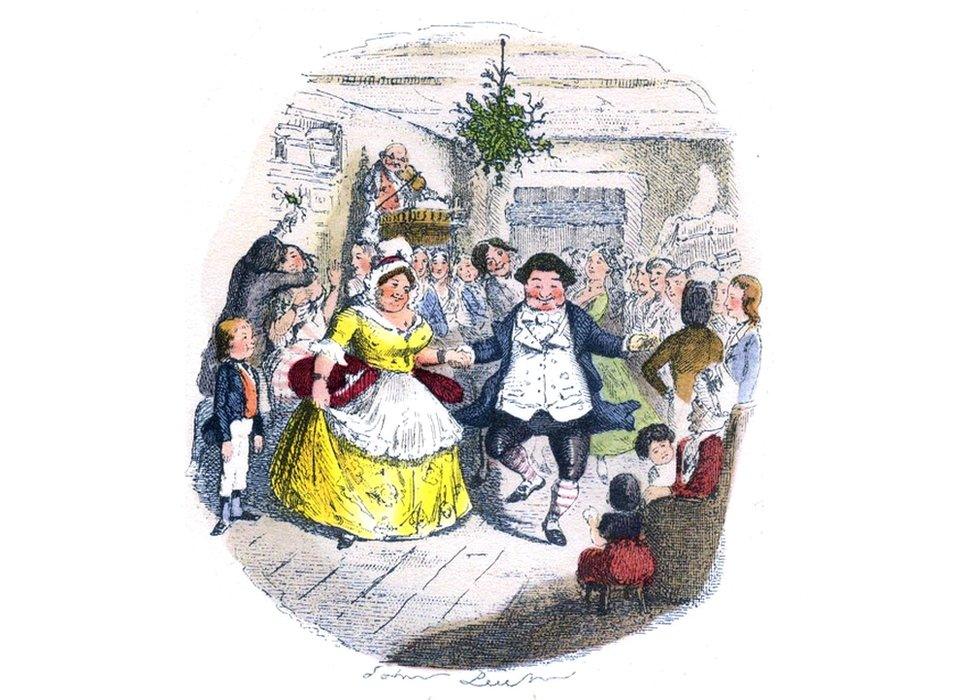
Mr Fezziwig's Ball by John Leech, from A Christmas Carol, is perhaps more the sort of thing Dickens is best known for
He followed this up with another four, publishing one a year up to 1848 - The Chimes, The Cricket on the Heath, The Battle of Life and The Haunted Man.
Each included drawings he worked on with illustrators, but none of them displays quite the iconic merriment of his initial Christmas creation.
"I think the reason for this is the thematic concerns of the Christmas books, which are often quite disturbing, and the fact that, surprisingly, there's very little of Christmas in the series," says Dr Goodman.
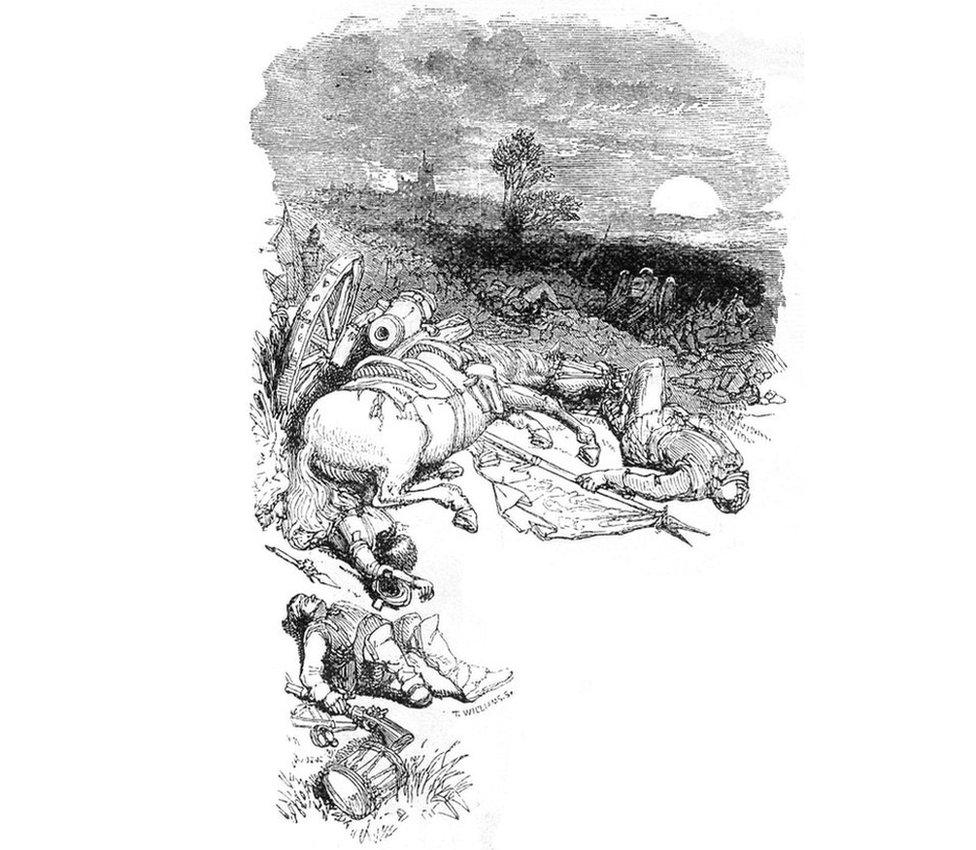
Dr Goodman considers The Battle of Life, featuring this illustration called War, by Clarkson Stanfield as his least favourite of the Christmas books
According to the researcher, the five books mostly follow themes of memory and characters being transformed, while often featuring some kind of supernatural element that provides them with a new understanding about the world.
"Dickens's main concern with the Christmas books, was less to do with Christmas as a holiday and more to do with the spirit of Christmas and its ideals of selflessness and forgiveness, as well as being a voice for the poor and the needy.
"To effectively communicate this message, Dickens had to create some very dark scenarios to give this message power and resonance, and these can be seen in the illustrations."

At least the dog in The Cricket on the Hearth was disturbed by what was happening to the kettle, in this illustration by John Leech
Dr Goodman says he loves all the Christmas books, but his favourite is "perhaps unsurprisingly" A Christmas Carol.
"Not only do I think the story itself is timeless and has gone on to inspire some incredible re-imaginings, but the illustrations have become so entwined with that work that when we think about A Christmas Carol what we construct in our heads are actually John Leech's images."
As for his least favourite, that would be The Battle of Life, a story he describes as having "not much of Christmas in it" and relying on "a fairly ridiculous twist ending".
"I really can't see the Muppets doing a version of it any time soon," he says.
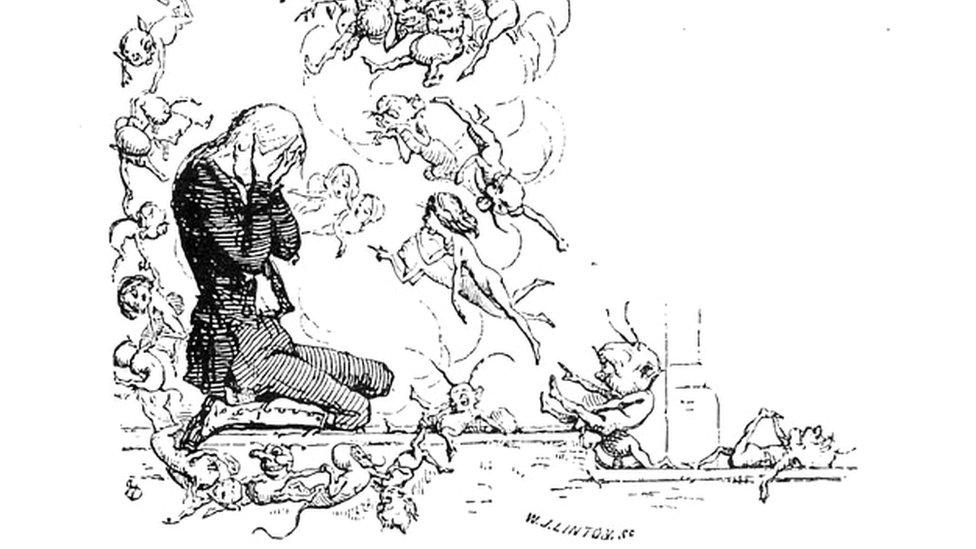
Trotty Veck is hounded by goblins in The Chimes, shown in an illustration by Richard Doyle
You can view the original illustrations from the Christmas books and Dickens's other novels in the The Charles Dickens Illustrated Gallery, external.

Listen to the best of BBC Radio London on Sounds and follow BBC London on Facebook, external, X, external and Instagram, external. Send your story ideas to hello.bbclondon@bbc.co.uk, external
- Published19 December 2018

- Published27 December 2022
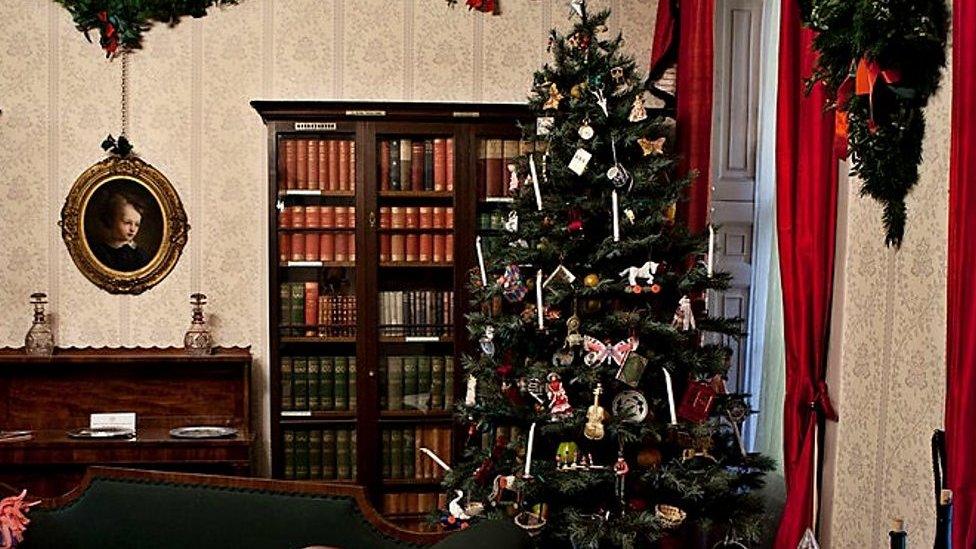
- Published28 October 2023
